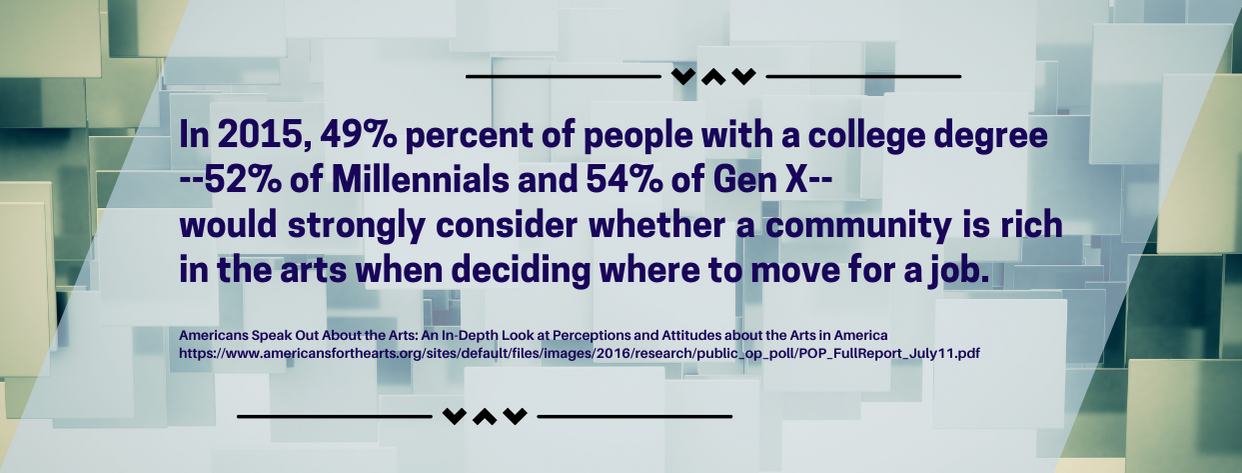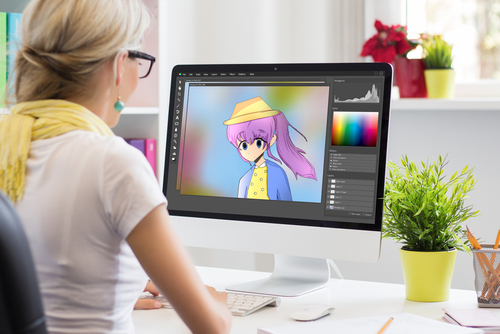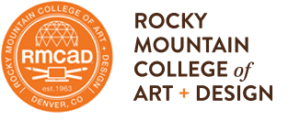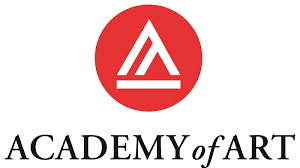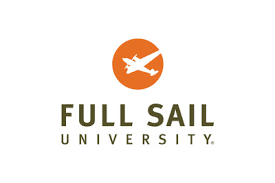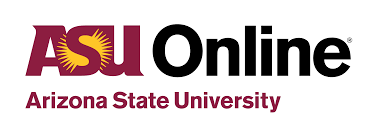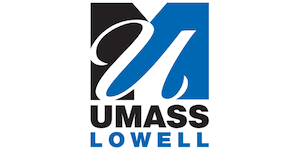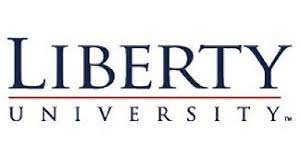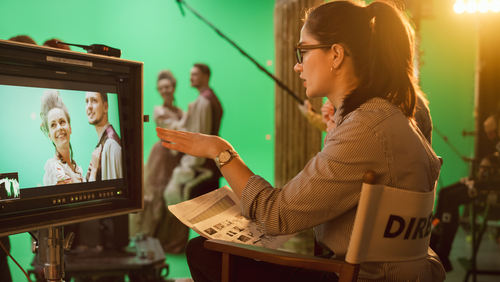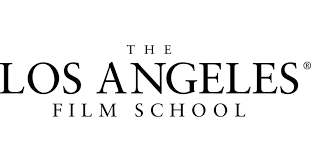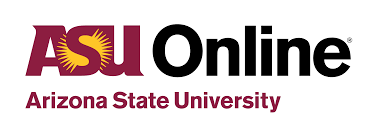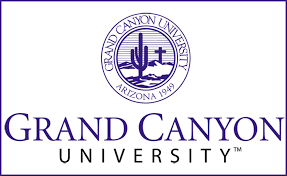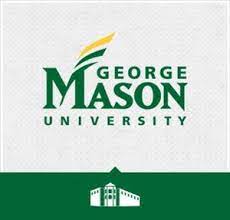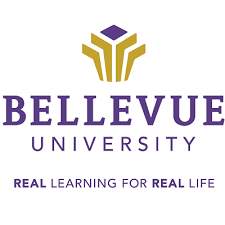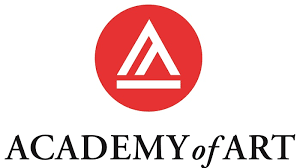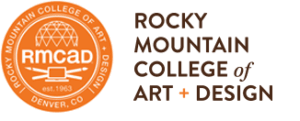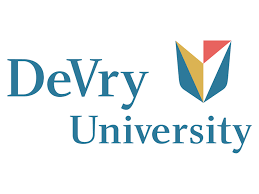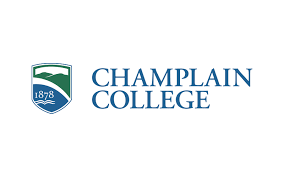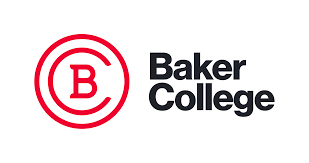Find Your Perfect School
The best thing about a bachelor’s degree in art and design is the countless opportunities to express your creativity meaningfully and establish your professional credentials!
A wide range of career paths is open for you, from graphic designer and illustrator to photographer and filmmaker. Whatever artistic talent you have will become finely-tuned skills with real-life applications that not only pay the bills but also bring meaning to your life.
All About The Bachelor in Art and Design
Unlike many bachelor’s degrees with rigid structures, a bachelor’s in art and design can be customized according to your interests and professional goals. You will be encouraged to create your portfolio of work while studying, both for academic and capstone purposes. In a way, your professional career starts while you’re in college because your portfolio becomes part of your résumé.
The baccalaureate degree is offered in these types:
- A Bachelor of Fine Arts (BFA) degree is suitable for students whose interest lies more in a professional career in visual arts. The curriculum emphasizes the development of creative abilities and a robust liberal arts and humanities foundation. Students choose from several areas of concentration, like jewelry, studio art, and graphic design.
- A Bachelor of Arts (BA) degree is structured to gain a comprehensive understanding of the principles and practices of art and design. The curriculum combines a forward-thinking, liberal arts education and core design courses that, in turn, prepare students for graduate studies and alternative design careers. The areas of concentration include environmental communication design, display, exhibition, computer modeling, and even furniture design.
- A Bachelor of Science (BS) degree attracts students who want to gain technical skills in design and drafting. These skills are valuable in careers that combine creativity, technology, and techniques like engineering and architecture. Indeed, many future architects find a bachelor’s degree in art and design useful!
Nonetheless, most of these programs have a 120-credit hours curriculum consisting of:
- General Education,
- Core Curriculum,
- and Major Courses.
Electives are also common, and these are intended to customize the degree, known as a minor. There’s usually a minimum number of credit hours required for graduation.
Applicants to art and design programs should ask about the transfer of credits, Advanced Placement credits, and dual credits. These previously earned credits are effective ways of reducing your overall time and tuition costs spent over the program’s duration.
Most programs have a four-year duration, but they can be shortened to two years with the generous transfer of credits policies. This is true when up to 60 credits from a related associate degree can be transferred.
The four-year duration isn’t a hard-and-fast rule either, particularly with online programs. Students can shorten it through a transfer of credits, full course load, including the summer term, and enrolling in an accelerated program. But it can also be lengthened by up to six years, the common cap on program completion, through part-time studies.
The courses differ in title and number depending on the specific program, but the common ones include:
- Basic design principles and practices
- Design computing
- Visual arts
- Building technology
- Architectural design
- Color theory and design
- Art history
- Digital photography
- Printmaking
- 2D and 3D drawing
Higher thinking skills, such as critical thinking, problem-solving, and analytical skills, are also part of education and training. These are transferable skills that employers and clients look for in arts and design professionals, particularly in high-stakes projects. Of course, natural creativity and curiosity are traits that every student must possess since these are among the pillars of a successful career.
Students can also expect the following activities in the course of their online studies:
- Writing and submitting essays, reports, and critiques
- Making creative and practical projects
- Listening to lectures by instructors and industry leaders
- Collaborating with faculty members and fellow students on various tasks and projects
- Planning your career with career advisors and mentors
Many programs also encourage, if not require, their students to undergo an apprenticeship period, usually during their junior or senior year. The apprenticeship, which may be paid or unpaid, provides students with real-world work experience in the following:
- a studio,
- film production company,
- or art gallery,
- among other places.
- The work experience is also an excellent way to beef up your résumé and establish professional networks, as well as learn valuable on-the-job skills.
Job Prospects for Bachelor in Art and Design Graduates
Not many art and design careers require certification or licensure, yet another reason attracting creative individuals to the programs. Interior designers are the most common example of an art and design career that requires certification, as is the case for photographers using drones.
The specific career path largely depends on the concentration or specialization, but there’s also no law limiting your career options beyond your degree! You may, for example, become a successful visual artist by using your talent and skills in animation or film production.
The popular career paths for art and design degree holders include:
- Multimedia artist
- Illustrator
- Animator
- Art director
- Film director
- Painter
- Sculptor
- Craft artist
- Fine artist
- Industrial designer
- Jewelry designer
- Fashion designer
- Graphic designer
- Production designer
Each career has its pros and cons in terms of salary, work environment, and career advancement, but all of these jobs can bring financial security and personal fulfillment. The trick is finding your niche, and it can be easier to do so if and when you start in school.
One of the ways that you may be able to find your niche early is through memberships in professional organizations. Here, you can make valuable connections, talk to successful professionals, and get guidance. Your chosen organization will depend on your concentration, but you may also look beyond your desired career.
A few examples of professional art and design associations are:
- Society of Illustrators, Artists, and Designers (SIAD)
- American Institute of Graphic Arts (AIGA)
- National Art Education Association
- Graphic Artists Guild
Our Ultimate List of Online Bachelor in Art and Design Programs
With that said, are you ready to enroll in an art and design program? If you are, then read on for the list of the best online programs! We chose the schools with regional accreditation and, in most cases, with programmatic accreditation. The programs are either 100% online or hybrid, particularly where an apprenticeship is required.
ANIMATION
Animation is a popular genre with numerous applications in diverse industries. Aside from feature and short films, animated GIFs, and cartoons, it’s also prevalent in visual effects, motion graphics, and video games. Most websites even use animation for their user interfaces. Indeed, you will find a wealth of career opportunities with a bachelor’s degree in animation!
In some cases, the animation concentrates within a bachelor’s degree program, such as a BFA in Digital Media. But with the increasingly sophisticated animation technologies, it’s offered as a standalone degree. Either path is acceptable provided that you gained the necessary skills in whatever type of animation you’re specializing in.
Online animation programs are typically 4-year programs with a senior capstone project and a work portfolio at the end. The online classes are conducted using virtual classroom software, with the common courses being:
- Art history
- Drawing
- 2D and 3D modeling
- Visual thinking
- Interactive media
- Computer animation
- Video production
- Figures and motion
- Film studies
- Game design
- Technical writing
- Pre-production animation
The admission requirements may include a high school diploma or GED equivalent, ACT/SAT score, official transcripts, statement of purpose, and recommendation letters. With animation programs being competitive, interviews, demonstration of skills, and portfolio highlights are common.
While an associate degree in animation and work experience may suffice for employment, employers may prefer applicants with a bachelor’s degree. This is due to the advanced skills learned in a 4-year program combined with the strong art and art history background.
With animation being a competitive industry, students must prepare for the high-pressure environment early on. Among the expectations from students are:
- Artistic talent and technical skills in drawing and other aspects of visual arts
- Computer skills since software and apps are used in contemporary animation
- Programming skills may also be required since coding is a typical part of the job
- Communication skills are a must since animators work as a team, as well as the ability to accept feedback and criticism
- Creativity can be further developed through exercises and teamwork
- Time management skills are just as important since juggling academic work with creating a portfolio and meeting deadlines is demanding
This set of skills becomes even more important in the workplace, where high-stakes projects demand focus, teamwork, and hard work. Animators, including special effects artists, typically perform these jobs:
- Meet with clients, animators, and directors, among other concerned professionals, in project development, including setting expectations and deadlines
- Use traditional illustrations and computer programs in creating the animation and graphics required in the project
- Work with other animators and illustrators in delivering the project goals
Most animators are self-employed or freelance workers, while the rest work in the video and film industries, software publishers, and advertising and public relations firms. Work-from-home is a possibility, although it may be necessary to meet in person from time to time. The work schedule is regular, but upcoming deadlines may mean working overtime in the evenings and weekends.
The median annual wage for Special Effects Artists and Animators was $98,950 (May 2022), but yours can be higher or lower depending on the company you’re working for and your position. Career advancement comes in supervisory and management positions, such as art director, with exceptional work experience and continuing education.
Top 3 Online Schools Offering Animation Programs
Rocky Mountain College of Art and Design
Denver, Colorado
: (303) 753-6046
Online BFA in 2D Animation/ BFA in 3D Animation
RMCAD is a for-profit school accredited by the Higher Learning Commission (HLC) and the National Association of Art and Design (NASAD). Of its numerous bachelor’s degree programs, its BFA in 2D Animation and BFA in 3D Animation are standouts because of exceptional graduate success.
Both programs have a 123-credit curriculum consisting of courses in liberal arts, art history, and foundations. Each program has its specific courses on animation and 2D or 3D animation, depending on the chosen concentration. Studio electives allow students to customize their degrees to a certain level.
The most notable courses are character design, modeling, storyboarding, and 2D and 3D animation. Every course is a standalone course, but it builds on prior courses and establishes the foundation for the next ones. Students are then advised to take the courses in the recommended sequential order whenever possible.
While there are many similarities between the two programs, the specialized skills are different. Students in the online 2D animation program develop their traditional drawing skillsets, which are still in great demand. Students in the 3D animation program focus more on their computer skillsets, usually with high-resolution computers and styluses.
Regardless of concentration, students learn to develop their unique creative talents and voice through a wide variety of assignments. The instructors are experts in using 2D and 3D animation tools and techniques, and their keen interest in passing on their expert skills manifests in stellar graduate outcomes. Students also learn from well-known animators who impart their real-world lessons and, thus, provide students with useful guidance.
Every project is designed to encourage students to use their creativity and techniques in creating compelling stories and animation. After program completion, you will have a portfolio filled with your original work and the ability to use animation for communication purposes.
Academy of Art University
San Francisco, California
: (800) 544-2787
Online BFA in Animation and Visual Effects
Offered by AAU’s School of Animation and Visual Effects, the BFA in Animation and Visual Effects degree allows students to choose from several concentrations. These are 2D Animation and Stop Motion, 3D Animation, 3D Modelling, Storyboarding, and Visual Effects. Regardless of the emphasis, students gain valuable experiences in full animation, although their specific core skills vary based on their specialization.
3D animation, for example, focuses on performance, movement, and timing using software, while 2D animation and stop motion put the spotlight on handcrafted work. The storyboarding emphasis is suitable for students who like to tell stories for films, games, and streaming media. The 3D modeling concentration enables students to create props and characters.
Every concentration involves completing 132 credit hours consisting of major, liberal arts, and core courses and electives. The major courses differ depending on the concentration, but the common courses for all emphases include:
- Introduction to computer graphics, 3D production, and animation principles and techniques
- Color fundamentals
- Principles of compositing
The online courses are conducted in two time frames – a 15-week and a 7.5-week format. Students are equipped with the necessary tools and technology to complete their projects. These include the Virtual Remote Lab (R-Lab), an online animation lab that online students can access from their personal computers. This is a useful tool because it cuts the time spent on animation projects from 12 hours to as little as two hours – and via remote access, to boot!
Online students use the Learning Management System (LMS) that serves as the common platform with their instructors. Here, compelling videos, documents, and slideshows, even interviews, are live-streamed and uploaded. Students can also see their instructors” feedback, grades, and other vital information.
Graduates leave the program equipped with stellar technical skills, creativity, and professional readiness. No wonder then that many of them become valued employees at Sony, Zynga, and Riot Games, among others.
Full Sail University
Winter Park, Florida
: (407) 679-6333
Online BS in Computer Animation
The 29-month BS in Computer Animation degree program attracts individuals interested in the whole nine yards of computer animation. Students acquire the skills to produce professional animation projects, from visual development, including sketching and storyboarding to final compositing. Every possible skill in visual arts, including character development and modeling, is part of the learning process!
Every month in the program has a specific learning module, and, thus, students are encouraged to follow the sequential order. The first few months feature introductory courses, including Creative Presentation, Psychology of Play, and Technology in the Entertainment and Media Industries. In the succeeding months, the emphasis is on the fundamentals of English composition, 3D foundations, and art fundamentals.
As time progresses, students learn more about advanced skills in modeling, 3D animation, and computer animation. Professional development seminars are key activities alongside portfolio development. There are several Project and Portfolio courses, too, combining hands-on learning experiences and portfolio assessments.
Students are provided with powerful technology throughout their stay at Full Sail through Project LaunchBox. The components included are an Apple MacBook Pro, Pixologic ZBrush, and Adobe Creative Cloud used to store files, coursework, and multimedia creations. Students then have access to their files on a 24/7 basis.
Students use only the best and latest software and apps and, thus, they are more than ready for the workplace! These include Adobe Photoshop and Premiere, Allegorithmic Substance Designer and Painter, Autodesk Maya, and Motion Builder.
Aside from the program’s accelerated format, which allows students to graduate earlier and incur lower debts, Full Sail makes it easier for students from all walks of life to earn the degree. Online students can apply for the Momentum Scholarship, which awards up to $25,000 in addition to other forms of financial aid.
ART & ART HISTORY
Students in art and art history programs prepare for fulfilling careers in the fine arts, from painting and photography to website design. Contrary to popular opinion, a bachelor’s degree in art and art history doesn’t lead to a career as a starving artist! Product designers, interior designers, creative directors, and museum curators are among the most lucrative careers.
The annual salary ranges from $53,420 to $75,910 aside from the perks. Plus, these art professionals have plenty of opportunities for viable employment and career advancement with as high as 10% job growth (2022-2032).
The degree is usually offered as a Bachelor of Arts because art and art history entails a broader art-centric understanding. But there are a few, if not rare, programs offering a Bachelor of Science degree with more focus on scientific and technological aspects. University of Wisconsin-Madison‘s program is a good example, but it’s an on-campus program.
Students learn core abilities that combine creative and technical skills in the fine arts that, in turn, involve the use of traditional, computerized and unorthodox media. But the creation of works of art isn’t the only core skill learned since students must also critique and analyze artwork, both theirs and other artists.
Every program requires its students to possess strong critical thinking, analytical, and problem-solving skills alongside their creative abilities. These skills are a must during art critiques and creation and the conduct and evaluation of research studies. The ability to work in a team, including effective communication and collaboration skills, is crucial in success.
Such intensive art and art history education makes graduates suitable for work in art galleries, museums, and auction houses. Many also pursue careers in diverse fields where their sterling research and writing abilities can be put to good use. The need for licensure or certification varies, such as a teaching license for individuals planning to teach art and art history in high school.
While a bachelor’s in art and art history degree may be a standalone degree, it may also be offered a choice in concentrations. The common ones are painting, design, and fine arts, with each concentration sharing liberal arts and foundational courses. The differences in the curriculum are in the major and elective courses offered as a customization option.
Online bachelor’s degree programs in art and art history typically have 120 credit hours in the curriculum. Popular courses include an introduction to art history, research methods, and design fundamentals.
Many schools allow students to transfer credits from a related associate degree, work and life experience, and art portfolio. Most use an asynchronous format, although it’s also common for students to attend synchronous classes.
Since an art portfolio is a final requirement, students may also attend in-person sessions. Internships and practicums are also common, and these are usually done in studios, art galleries, and museums. These are vital in gaining real-world skills and experience, including establishing a career network.
Top 3 Online Schools Offering Art and Art History Programs
Arizona State University Online
Tempe, Arizona
: (866) 277-6589
ASU’s BA in Art History degree program encourages students to appreciate art in various forms and functions across several eras. In many ways, a degree is a useful tool in understanding people and places through their artistic expressions in visual media! Graduates become authoritative resource persons on art and art history, choosing between pursuing graduate studies and starting a career in the art world.
Students prepare for these career paths through comprehensive art and art history studies combined with a liberal arts education. Cultural awareness and literacy are among the notable skills learned in the program alongside creative thinking, critical thinking, and problem-solving skills. In reading, writing, and presentation, communication skills are necessary to thrive in the liberal arts-centric environment.
Major courses include:
- Art from Prehistory Through Middle Ages
- Art from Renaissance to Modernism
- Art of Africa, Oceania, and the Americas
- Research Methods
First-year applicants must have fewer than 12 transferable credits and must comply with competency requirements for admission purposes. Math and English and lab and social science courses in high school are among the academic requirements. Applicants must also comply with at least one of these criteria:
- 3.0 GPA in the required competency courses
- Top 25% of the graduating class in high school
- 22 ACT score of 1120 SAT Reasoning score for Arizona residents (24 and 1180 for non-residents, respectively)
There’s a non-refundable application fee. Compliance with the application requirements and deadline doesn’t guarantee admission, and applicants may be asked to submit other documentation.
University of Massachusetts-Lowell
Lowell, Massachusetts
: (978) 934-4000
Online Bachelor of Liberal Arts – Art History Concentration
The minimum requirement for graduation in the BLA Art History Concentration is 120 credits and a cumulative 2.0 GPA. The curriculum includes liberal arts, foundation, and core courses that ensure students get a world-class education. The required courses include the History of Art I and II and three courses in art history at the 3000-4000 level.
The sample courses are among the most engaging, with their emphasis on art through the ages. Students memorize dates and understand the culture, people, and places behind prehistoric, medieval, and modern art. Comprehensive studies about historical periods related to art and culture enable students to make informed critiques, too.
Students can complete the online program in four years, but the duration can be shortened to 12 months for transfer students with transferred credits. UMass Lowell accepts up to 90 credits for transfer.
In keeping with the idea of transferable skills, students must develop their higher thinking skills in analyzing and evaluating art and art history. Communication skills, including writing and presentation skills, are also fine-tuned in preparation for real-world demands.
Indeed, students are expected to master the university’s seven Essential Learning Outcomes (ELO). These include applied and integrative learning, information literacy, and diversity and cultural awareness. Each ELOs is developed in online classes, projects, and interactions, so students have mastered all seven upon graduation.
Penn State World Campus
University Park, Pennsylvania
: (800) 252-3592
BA in Letters, Arts, and Sciences
The 120-credit BA in Letters, Arts, and Sciences program uses a multidisciplinary approach where the arts and sciences complement each other. Students can design their program of study based on their unique interests and goals, and it’s possible through planning with an academic advisor. But the overall direction points toward developing four liberal arts-centric academic principles – theory and application, communication skills, research, and critical analysis.
In the process, students have enviable employment opportunities, thanks to their transferable skills, including leadership skills. Penn State graduates are known for their open-minded attitude that promotes collaboration amidst diversity. While the curriculum consists of the standard general education, core, and major courses, the Penn State approach elevates it to stellar levels.
Courses include:
- Research methods in sociology, labor studies, and employment relations
- Introduction to article writing
- Conflict resolution and negotiation
- International relations
Students must also complete an undergraduate field experience after completion of 60 credits. Permission must be requested from the department before any practicum can start.
Individuals interested in a fulfilling art career, a graduate degree in art and art history, or career advancement are welcome to apply. The application requirements also make it easy, including a high school diploma or GED equivalent and official high school or college transcripts.
The tuition fee per credit depends on the number of credits taken every semester and the number already earned. The tuition fee is lower for students with less than 59 credits and taking 11 or fewer credits during a semester than students with 60 or more credits.
Financial aid, including federal aid, scholarships, and military discounts, are available. Easy payment options are also offered.
FASHION
Online bachelor’s degree programs in fashion design typically have between 120 and 128 credits in the curriculum. Four years is the recommended time of completion, but there are accelerated programs with shortened duration. Many programs also allow part-time enrollment, particularly for working adults, stretching completion time up to six years.
These programs are offered in several types – BA, BFA, and BS, even as a Bachelor of Professional Studies. While general education courses are similar in all types, the major courses and their focus are different. While BA and BFA programs focus on the creative side of fashion, BS programs have a more technical/technological approach.
The typical topics covered found in these programs include: (The depth in which courses are discussed vary depending on the type of degree.)
- History and director of fashion
- Principles of art and design
- Drawing, sketching, and illustration using traditional and computer-aided techniques
- Apparel construction, including pattern-making and sewing
- Business practices in the fashion industry including management, merchandising, and marketing
- Product development and retail product management
- Consumer behavior
Students develop their theoretical and practical skills related to the fashion industry, a multibillion industry known for its resilience. Since fashion is an ever-evolving concept, making projections is also a sought-after skill in graduates of fashion degree programs.
Most online programs also have an internship aspect since work experience, both paid and unpaid, is crucial for success in the ultra-competitive fashion industry. The internship details vary depending on the program and specialization, but the typical ones include working for a company and attending internship seminars.
Due to the creative nature of the fashion industry, students must also create a portfolio of original work that will be presented as part of graduation requirements. The portfolio usually consists of design projects that meet predetermined briefs, such as original designs of accessories. Many programs may also require a research study on relevant topics in the fashion industry on top of the portfolio and internship.
Concentrations within the fashion degree may also be offered. These include fashion design, fashion styling, costume design, and product development. Fashion merchandising and business management are popular concentrations because fashion is a big business.
The numerous career paths for holders of bachelor’s degrees in fashion make it an appealing education despite the challenges that come with it. Your career path will partly be determined by the specifics of your degree, particularly its concentration, but many of your skills are transferable across several jobs.
The career paths include fashion designer, fashion stylist, fashion editor, buyer and purchasing manager, business manager, even manufacturing manager. The median salary for these occupations vary, but most have above-average wages, such as fashion designers earning $77,450 (May 2021). The workplaces are just as varied, too, with the more popular being the film industry, manufacturing companies, and fashion retailers.
Top 3 Online Schools Offering Fashion Programs
Lindenwood University
St. Charles, Missouri
: (855) 941-0568
Hybrid BS in Fashion Business and Entrepreneurship
If you’re skilled in the business side of fashion or putting up your own fashion business, you may want to consider Denwood’s program. Students here learn about the principles and practices of the fashion industry through a combination of academic coursework and practicum. The program’s hybrid nature provides students with the opportunity to study at their own pace while also gaining real-world practical experience.
There’s no on-campus residency required -it’s 100% online delivery for the courses – but the practicum involves in-person onsite interactions. Students have to undergo practicum for every semester of full-time enrollment status. The practicum doesn’t come with credits, but it’s an exceptional opportunity for social interactions and professional networking.
There are opportunities to learn from the experts through fashion week activities and participation in Lindenwood’s Fashion Design and Business Advisory Council. The latter involves active engagements with industry leaders and successful alumni.
Lindenwood’s 120-credit program can be completed in four years as a full-time student, with the maximum duration for completion is six years. The curriculum consists of 18 fashion business courses intended to equip students with effective business skills. The 120 credits include 30 credit hours for major core courses and 90 credit hours for general education courses and electives.
Students with prior college credits can request credits from community colleges and other regionally accredited institutions. Earning the degree is possible even with just 30 credits of it taken within the university’s system.
Applicants must submit a filled-up online application along with all official transcripts, résumé, and personal statements. The official transcripts can be from high school in first-year students with less than 24 college-level credits or colleges attended.
The tuition fee is under $500 per credit, but the tuition fees can be reduced through financial assistance, such as scholarships and military discounts.
Liberty University
Lynchburg, Virginia
: (800) 424-9595
Online BS in Fashion Merchandising
Earn your degree in 3.5 years (average) through Liberty’s online BS in Fashion Merchandising program! The 120-credit program features eight-week courses without a residency requirement. Students can transfer up to 75% of the credit total from earned college credits, such as a related associate degree.
This is an excellent training ground for aspiring fashion merchandisers and retailers who want to succeed in the dog-eat-dog world. The skillsets learned here to prepare students for the demanding job ahead, which involves quick thinking and effective communication. Business management skills are emphasized, so students aren’t greenhorns to the business side of fashion.
Aside from the general education courses, core and major courses cover creative arts and business management. The more notable courses are:
- Digital drafting
- Fashion industries and markets
- Elements of fabric
- Retail merchandising
- Software for design
Liberty ensures that its faculty members are available for consultations at reasonable hours, too. Students can coordinate with their fellow students and faculty members for concerns about projects, among others. The level of professionalism in student-faculty relationships makes Liberty’s online programs among the best!
But it isn’t just in relevant academics that students benefit from the program. Students also learn real-world skills through a local internship, typically in their junior or senior year. The internship provides work experience that even extensive online discussions cannot provide for students.
Johnson & Wales University
Providence, Rhode Island
: (855) 598-1881
Online BS in Fashion Merchandising and Retailing
JWUOnline’s BS in Fashion Merchandising and Retailing program has a low student-to-faculty ratio (16:1) despite its availability for students nationwide. This is a deliberate action that ensures the quality of instruction meets JWUs exacting standards. No wonder then that JWU touts its career outcome rate at 97.7%!
The four-year degree program features general education, core, and major courses, as well as electives. The majority of these courses are eight weeks long, but some may have a 16-week duration. The major courses include retailing, the business of fashion, retail executive decision-making, and cases in fashion merchandising and retail.
Students develop a variety of skills, including:
- The application of basic yet major principles and practices in the fashion business, from buying raw materials to selling the finished products
- The ability to communicate business goals and objectives to diverse groups, including merchants, suppliers, and consumers
- The use of tools and techniques in solving contemporary issues and applying them using ethical practices
- The ability to analyze historical trends to make the company and industry forecasts for decision-making purposes
Aside from online academics, students also gain hands-on experience in several ways. Internships are common for students who want to learn the ins and outs of business on the ground. Summer work and study abroad opportunities are also on the agenda, and many students take them, too. Students may also customize their education through electives.
JWU has a rolling admissions process, so you can start whenever it’s convenient. You may also pursue a minor in Human Resource Management, which can increase your potential professional value.
FILM
The film and television industry has a reputation for glitz and glamour, but it’s only so because of the people working behind the scenes. Individuals interested in making the magic happen can look into online film degree programs that equip them with the necessary skillsets.
While there’s little formal preparation necessary for admission, it’s a good idea to gain theater experience in drama clubs, summer festivals, and other venues. Many programs prefer applicants with theater experience, thus, the recommendation. English courses are also recommended for individuals interested in a screenwriting program.
The coursework will depend on the concentration, with the more popular being:
- Production
- Cinematography
- Directing
- Editing
- Screenwriting
- Film history
- Film critique
Regardless of the concentration, film programs provide students with a broad understanding of film production’s theoretical foundation and practical applications. The foundational courses are common in these programs to gain transferable skills resulting in employability across diverse jobs. These courses include:
- Introduction to film history covering the evolution of motion picture technology and cinematic movements
- Narrative and non-narrative filmmaking discussing the different types of film, the auteurs to the commercial movies
- Film technologies that focus on the equipment used in filmmaking like cameras, audio recording devices, and lights
- Film production including its business side where budgeting and financing, distribution and profit-sharing, and other aspects are discussed
- Film theory, including the impact of film on audiences and film critiquing, is just as important in the understanding of the industry
Students tailor their degree according to their specific interests through electives while the major courses equip them with the basic skillsets for their specialization. Aspiring camera operators, for example, may take advanced cinematography classes, while an aspiring film critic will go for theory-centric and English-heavy courses.
Learning also happens outside the online classroom. Thus, most film programs have a hybrid nature. The in-person, face-to-face internships, usually unpaid work experiences, are with film-related companies. Many programs have internship agreements with YouTube, Hulu, Marvel, and Disney, and independent organizations.
After graduation, you may be able to apply for entry-level positions in the film and television industry. Keep in mind that it’s a competitive industry that values work experience and connections. You should then gain as many of both aspects during your studies and internships.
The median pay depends on the type of job and company and your work experience and position. Film editors earn a median annual salary of $61,900, while directors and producers earn $76,400 (May 2021). But the earnings of successful directors and producers may be extraordinarily high due to their proven box office track record.
Continuing education may be necessary for some professionals in the film and television industry. A Master of Fine Arts (MFA) in Film and Media Production is a popular option, as are certificate programs for specific skills.
Top 3 Online Schools Offering Film Programs
The Los Angeles Film School
Hollywood, California
: (323) 860-0789
Online BS in Digital Filmmaking
Located right in the heart of the international film and television industry, the Los Angeles Film School offers an outstanding online BS in Digital Filmmaking. Students become immersed in the art and science of digital film production through academic coursework and hands-on projects. Each project strengthens your skills in content production for diverse media, from traditional broadcast television to streaming services, independent films, and mobile apps.
This is a 120-credit program designed for completion in 36 months. Each course lasts for four weeks and can only be taken one at a time, thus, allowing students optimum learning opportunities. The curriculum has a sequential order, so students are encouraged to pass each subject to move on to the next. The courses include an introduction to cinematography, digital product design, and special effects.
The last few months are dedicated to capstone projects, including film production, pre-production, and post-production. Students also take a course on creative portfolio development. A must, considering that companies partly base their hiring decisions on portfolios.
The online program has a dedicated LMS, a web-based platform where students and faculty discuss projects, submit weekly assignments, and attend lectures. Every student is also provided with on-the-go essential film equipment, including a Black Magic Pocket 4k Cinema Camera, a MacBook laptop with a downloadable Adobe Creative Cloud Suite. The apps used in filmmaking include Audition, After Effects, and Premiere, meaning students will graduate with techie skills.
A basic admission requirement is a high school diploma or GED equivalent. Classes start every month, so it’s a convenient way to learn for working professionals. Note that LAFSdoesn’t offer individual courses since each course builds on the skills learned in the previous courses.
The nine-semester program will set back each student an estimated $85,000. But financial aid, including FAFSA, institutional scholarships, and military benefits, can result in significant tuition discounts.
Arizona State University Online
Tempe, Arizona
: (866) 277-6589
Online BA in Film and Media Studies
The 120-credit online BA in Film and Media Studies program has a theoretical emphasis instead of a hands-on approach to film production. Students learn to analyze and criticize films, television shows, video games, and new media products. The courses are designed to critically analyze film history, its impact on society, and the influential factors shaping the film industry.
Students take up 39 classes, with each class lasting for 7.5 weeks. The coursework involves video lectures, online discussions, and critical readings, as well as film screenings. The combination of academic coursework with film screenings results in the students” full immersion in the world of film and media studies.
The notable courses include:
- Introduction to Film and Media Studies (HU)
- Film and Media History
- Race and Gender in US Media
- Television Studies
The myriad aspects of production are also discussed but from a more observational stance instead of a hands-on approach. Students learn about media production from the development to the distribution phase. Becoming a more critical consumer and observer of film and media is an ultimate learning outcome.
The hands-on aspect comes in internships and activities that ASU has lined up for online students. These include attending the Sundance Film Festival and access to on-campus resources, including the ASU Film Spark and ASU Student Film Festival. With other on-campus resources like Film Association at ASU and Sun Devil Empire, there’s no doubt that ASU attracts the next generation of film professionals!
Graduates have an excellent chance at entry-level landing jobs in film, television, and other media, thanks to their stellar skills in media analysis and transferable skills. Many successful careers in marketing, branding, and media policy, even in social media.
Grand Canyon University
Phoenix, Arizona
: (602) 639-7500
Online BA In Digital Film With An Emphasis In Production
GCU’s College of Fine Arts and Production offers an online BA in Digital Film with a Production concentration known for its exceptional quality of instruction. The faculty members that teach the major subjects have industry expertise under their belts and, thus, are in the best position to provide collaborative instruction. Students learn through academic coursework imbued with practical knowledge of what goes on behind the scenes.
The learning outcomes reflect the diverse aspects of digital film production. Students learn behind-the-scenes skills, including narrative storytelling, cinematography, and music, among other production aspects. Their studies also include learning the business ropes, from budgeting and funding to distributing content. Their coursework becomes even more intensive, with classes on the technical side for independent and commercial movies.
Suffice it to say that students become well-versed in the creative, technical, and business sides of film production! Passion and perseverance are desirable traits considering academic rigor. Students are also encouraged to develop their higher thinking skills and be quick on their feet since their future jobs demand them.
This is a 120-credit program that includes major courses like:
- Film production management
- Cinematography
- Nonlinear editing
- Audio production
Most courses last for seven weeks, including the general education and core curriculum courses. These include English composition, mathematics, and elementary Spanish. But courses last for eight weeks, such as visual storytelling, due to their more comprehensive nature.
During their senior year, students gain hands-on experience through the Digital Production Practicum course. The main requirement is the creation of short professional-level digital films that showcase their talent.
The tuition is under $500 per credit, but financial aid, including federal assistance and institutional scholarships, is available. Students can also transfer earned credits to reduce their total tuition and stay in the program. Up to 90 credits can be transferred, but only 84 credits can be in the lower division.
GAME DESIGN
The US videogame industry is valued at nearly $65.50 billion in 2021, and it’s among the largest employers in the country. Individuals with a degree in game design will find plenty of opportunities for entry-level jobs and career advancements!
But being a game designer isn’t as easy as playing the videogames either. Game designers must be dreamers and doers at the same time! Game development involves the entire process, from writing the plot, gameplay, and characters to producing the entire game. Working overtime and on weekends is part of the job, particularly with eminent deadlines and stiff competition.
But software developers, such as game designers, are a well-paid lot with an average base salary of $110,140+ and bonuses and other perks. The positive job outlook – about 22% annual growth until 2030 – attracts talented individuals to the field.
Bachelor’s degree programs in game design prepare students for the diverse occupations in the videogame industry. With design being the starting point for videogame development, students are exposed to a multidisciplinary curriculum. The courses blend creative arts, including theory, narrative storytelling, and mythology, with computer software technical skills.
The coursework reflects such a multidisciplinary approach with popular major courses including:
- Information technology concerning digital games
- Basics of graphic design including theory and applications
- 3D modeling and animation
- Character and plot development
- Scripting
- Coding or programming
Most, if not all, programs typically have studio work that requires in-person presence. The studio work may involve portfolio creation and critiquing while also providing field experience in a non-work setting.
Students may have choices in concentrations like:
- Game Art
- Animation
- Game Development
- Mobile Game Design
- Concept Art and Illustration
Online programs may also have similar, if not the same, curriculum as their on-campus counterparts but with the academic courses delivered online. The duration may be four years, on average, but there are programs with an accelerated format so that students earn the degree in less time. Students may also earn the degree in six years” time through part-time enrollment.
No matter the number of years it took to earn the degree, graduates are ready for entry-level jobs. And there are plenty of design careers, too, including 3D modeler, animator, and concept artist. Career advancement is a product of work experience, continuing education, and networking, with popular jobs being an art director and graphics director.
Most of these jobs don’t have licensing and certification requirements. But certification programs attest to mastery of professional skills, such as advanced programming, which can be your edge, career-wise.
Top 3 Online Schools Offering Game Design Programs
Savannah College of Art and Design
Savannah, Georgia
: (800) 869-7223
Online BA in Digital Media Game Development Concentration
The four-year BA in Digital Media consists of 180 credits, and students can choose between two concentrations – interactive design and game development. SCAD, a private nonprofit school, dedicated to art and design, has annual tuition fees on the high end, but students can avail of financial aid.
Students are known to win prestigious gaming competitions and, thus, prove that a SCAD education has real-world applications. These competitions include The Rookies, Intel University Games Showcase, and Blizzard Entertainment Student Art Contest. Students have the opportunity to be featured in prestigious publications like Wired and game Informer through their original game concepts, too.
Graduates have become valuable employees at prestigious tech companies, including Adobe, Microsoft, and Adobe. Said success doesn’t come as a surprise since students have access to superpowered technology, such as augmented and virtual reality, used in these companies.
The 100% online program has an asynchronous instruction style, so non-traditional students can earn the degree while balancing life responsibilities. Learning happens beyond the online classroom, too, through professional conferences and peer collaborations. SCAD, indeed, is the alma mater of the next generation of game designers!
But getting into the competitive program is no walk-in-the-park! Admission requirements include at least a 3.0 GPA, satisfactory scores on ACT/SAT, and other documentation. Applicants are evaluated based on academic record and potential for contributing to the SCAD community.
Once accepted, students take foundational, general education, and major courses like:
- Drawing I and II (Form and Space; Composition and Media)
- Design I: Elements and Organization
- Applied Principles: Game Art and Game Design
- Introduction to Interactive Design and Game Development
Students also undergo undergraduate internships with local companies. The internship is intended for work exposure, professional networking, and social interactions.
Southern New Hampshire University
Manchester, New Hampshire
: (888) 327-7648
Online BA in Game Design
SNHU ensures that the common barriers to higher education are eliminated through its online programs. This is true for the BA in Game Design degree, where students attend classes from the comfort of their homes. Applicants also take advantage of the rolling admission policy and the fast feedback on the admission decision.
There are no application fees and no standardized test requirements. Applicants can transfer up to 90 credits from their associate degree and other previously earned college credits. Certain work and life experiences, law enforcement training and military service, and industry-recognized certifications may also be translated as transferable credits. Even advanced math knowledge can be considered for credits!
There are six undergraduate terms with courses lasting for eight weeks each. Students can start as soon as the next term begins or whenever it’s convenient for them.
The minimum number of credits for graduation is 120, but it can be reduced with transferred credits. The tuition is just over $300 per credit, but SNHU has generous financial aid options. The cost is well worth it, too, because SNHU graduates bring with them the school’s sterling track record.
The curriculum balance the creative and technical aspects of game design. Students use industry-standard 2D and 3D graphics software for their assignments and projects. Adobe Software Suite and 3DS Max are among the software used.
Learning outcomes include the ability to perform game design-related tasks, including:
- 3D modeling and sculpting
- Traditional and digital illustration
- Character animation and rigging
The result of these projects is a unique portfolio reflecting your specific talents, skills, and interests. The works in your portfolio will also reflect your creative and technical range in game design. Employers will see that you are well-prepared in designing and developing a wide range of videogame platforms from mobile to web.
George Mason University
Fairfax, Virginia
: (703) 993-8978
Online BFA in Computer Game Design
GMO’s BFA in Computer Game Design is a NASAD-accredited, 120-credit program designed for traditional and non-traditional learners. Its 100% online delivery means zero residency requirements, although students are welcome to use on-campus resources. GMU uses the Blackboard learning platform, while students can download Microsoft Office 365 ProPlus for free. Student discounts are available at the Patriot Tech eStore for certain software.
Since it’s a BFA degree, students earn a degree emphasizing the creative aspect of game design. But their technical skills are also above-par with courses in computer science, visual technology, and computer programming. Other core subjects include computer animation for games, 2D design and color, and online and mobile gaming.
An internship is a requirement for graduation. Students gain practical experience that puts their skills to the test in real-world situations and improves their employability. Local companies are the typical places for internships, and students may choose their workplace.
The tuition differs for Virginia residents and non-residents, even in online programs. Virginia residents pay under $600 per credit with the opportunity to apply for federal assistance, institutional scholarships, and other forms of financial aid.
Students can access the Virginia Serious Game Institute (VSGI), a platform for budding entrepreneurs in the videogame industry. Knowledge creation and support for startups are among its sought-after services.
The Mason Game and Technology Academy (MGTA) is also open for students who want to gain a competitive edge. MGTA offers enrichment courses highlighting the mix of art and technology in game design. STEM core competencies are the popular courses here.
Program admission is on a competitive basis. Applicants must submit a writing portfolio along with the regular application requirements to be considered.
GRAPHIC DESIGN
Graphics designers are communicators at heart. But instead of words, their main form of communication is visual images that inform or inspire the audience. Indeed, their professional work is behind the images seen on news reports, magazines and newspapers, and advertising materials.
With $57,990 as the median annual salary, graphic designers are a well-paid bunch. Their occupation is still in high demand despite the decrease in print media since their skills are transferable to digital media. Their artistic and technical skills are useful in diverse industries, too, from marketing to website design.
The entry-level requirement is a bachelor’s degree in graphic design from accredited institutions. Traditional four-year programs are offered online, although there are also accelerated options. The courses can be taken on a part-time or full-time basis, which will result in varying graduation timelines.
The curriculum consists of various courses that reflect the type of programs, such as an arts-centric focus for the bachelor of arts program or a technology-heavy load for a bachelor of science. But there are usually general education and core curriculum courses that provide balance to the training.
The major courses vary, but these are the typical ones for prestigious programs:
- 3D graphics
- Art history, theories, and applications
- Web design
- Computer-aided design
- Drawing and illustration
Students may take these courses in a sequential order to build up their knowledge and skills in every aspect of graphic design. Electives are offered, too, as a way of tailoring the degree to your unique interests, such as in creating marketing materials.
Capstone projects, usually in the form of a work portfolio, are common graduation requirements, too. The work portfolio is an accumulation of past projects and a final semester capstone project. The latter is a testament to your ability to conceptualize, develop and execute a professional-level graphic design project.
The degree in graphic design may be a standalone degree or a concentration within a degree. There are also programs where a graphic design degree comes with a choice in concentration. The concentration, or major, may be in illustration, interactive design, or industrial and product design, to name a few.
Aspiring graphic designers must possess traits that can be developed during their studies. These traits include analytical and communication skills, artistic ability, computer savvy, and time management. These can also be transferable skills with applications in diverse jobs, from web designer to art director.
Professional certifications and licenses from industry bodies are uncommon. But software product vendors and programs offering post-degree certifications are common, and these are recommended for career advancement.
Top 3 Online Schools Offering Graphic Design Programs
University of Maryland Global Campus
Largo, Maryland
: (855) 655-8682
Online BA in Graphic Communication
Students in the online BA in Graphic Communication program will create an extensive portfolio during their time at UMGC. Their respective portfolio may be used for job hunting purposes, particularly as a testament to their graphic design skills. Graduates have found professional success in the public and private sectors as communication specialists, graphic designers, and managers.
Employment isn’t the only career path open to UMGC graduates! Students also create a business plan for their entrepreneurial ventures in graphic design or communication.
Other learning outcomes include:
- Develop effective graphic communication projects that incorporate the principles of context, color, and composition
- Create motion graphics, user interfaces, and website designs, among other interactive solutions, according to briefs
- Use creative, collaborative, and technical skills during teamwork projects
- Lead design campaigns to demonstrate leadership skills and design abilities
The minimum number of earned credits for graduation is 120, and it should consist of a mix of general education, compulsory major, and minor and elective courses. The latter form the bulk of the curriculum, while the major courses consist of 33 credits.
Students are well-advised to follow the recommended course sequence. But your plan of study will likely be unique depending on your number of credits transferred and your course load. There are no formal preparations for entry into the program other than a high school education or its equivalent, among other standard requirements.
Online tuition is a little over $300 per credit, perhaps the most affordable among graphic design programs. UMGC being a public university means that students can apply for federal assistance and institutional and external scholarships. In-state tuition rates are more affordable, too, and military personnel and federal government employees enjoy reduced rates.
Bellevue University
Bellevue, Nebraska
: (800) 756-7920
Online BA in Graphic Design
Bellevue’s tuition rate is among the most affordable at $400+ per credit for online courses and $250 per credit for preferred military students. Financial advisors assist students in exploring their financial aid options, including federal aid, scholarships, and grants. Tuition reimbursement benefits and transfer of credits are also effective tuition reduction methods.
Transfer of credits is allowed under several instances, too. The more common is earned credits from an associate degree, including an associate in applied science degree; terms and conditions apply. Military training and experience may also be turned into transferable credits.
Students prepare for successful careers in graphic design by mastering the principles and practices of visual communication. Their skillful use of the tools and technologies used in graphic design makes them more attractive to employers. Their proficiency in the graphic design and development process means transferable skills for both print and digital media.
In your studies, you will also develop a comprehensive portfolio that showcases your artistic and technical skills. Potential employers will use your body of work to determine your suitability.
Among the software that students master in the program are:
- Adobe Illustrator
- Adobe Photoshop
- Adobe InDesign
- Adobe XD
This is a 127-credit program that includes integrative general education, major and elective courses. Examples include idea generation, design basics, fundamentals of print design and web design, and programming.
Academic success is a hallmark of a Bellevue online education, and it’s possible through effective student support services. Student Coaches provide support for students from admission through graduation.
PHOTOGRAPHY
Photographers are storytellers, too, with their photos opening our eyes to stories we may have missed or dismissed. While photography can be taken as a hobby with little formal training, a bachelor’s degree will turn raw talent into effective skill. The formal training will also equip aspiring professional photographers with a useful understanding of business practices and digital technology.
Graduates of online photography degree programs have several possible career paths, including studio owners, freelancers, and employees. The popular workplaces are in publishing companies, marketing agencies, forensics firms, and dedicated photography firms. With a median annual wage of $40,170 (May 2022) and other perks, photographers can enjoy a living wage while also enjoying their craft.
While there are differences in their daily tasks, commercial photographers, photojournalists, and freelancers have common composition, color, and lighting skills. A keen eye for detail combined with creativity is a must for success, while interpersonal skills are necessary for dealing with clients and other professionals. Photographers must also possess business skills, particularly for studio owners and freelancers, and computer skills in using the latest digital technology.
The creative aspect and technical skills can be developed through formal training, typically through a four-year bachelor’s degree program. Many programs require students to complete at least 120 credits of academic coursework, internship, and portfolio development. The curriculum will differ depending on the program itself and the concentration, if any, with the more popular being fine art photography, commercial photography, and photojournalism.
The coursework includes a wide range of photography-related courses in addition to general education and core courses.
- History of photography
- Current trends in photography
- Black-and-white and colored photography
- Analog and digital photography
- Computer applications
- Studio and environmental photography
- Business practices, including marketing and finance aspects
While formal training results in the mastery of basic photography skills, it doesn’t result in instant success in the industry. Most graduates start their careers as assistants and learn more skills on the job. The work experience not only develops master-level skills but also provides opportunities for building professional connections. The collection of works or portfolios also improves quality and, thus, is more attractive to clients and art directors.
Becoming a professional photographer doesn’t require certifications and licenses except in certain cases, particularly drone photographers. In their case, a Federal Aviation Administration (FAA) certification is required.
Continuing education for photographers comes in many forms. Post-degree certification programs and master’s degrees in photography are popular choices, the latter especially true for photographers who want to work in the academe.
Top 3 Online Schools Offering Photography Programs
Southern New Hampshire University
Manchester, New Hampshire
: (888) 327-7648
Online BA in Digital Photography
The 120-credit, 100% online BA in Digital Photography program welcomes students working with professional photographers while developing their style. Standardized test scores aren’t required for application, and there are no application fees. Applicants are assessed based on academic record, artistic potential, and possible contributions to the SNHU community.
SNHU’s competitive online tuition rate – just over $300 per credit – can be reduced by a significant amount through scholarships, federal aid, and military discounts. The university also hasn’t increased its tuition fee in more than a decade, and there are no hidden fees in its tuition structure.
Students benefit from the robust liberal arts and humanities education that equips them with marketable and transferable skills. These include strong communication skills combined with higher thinking and interpersonal skills. Suffice it to say that SNHU graduates learn work-related skills during their studies, thus, their seamless transition.
The learning outcomes include the proficient ability to:
- Use a wide range of techniques, tools, and equipment in photography
- Create photographs with professional quality and with a compelling narrative
- Use social media and other platforms in getting attention for your work
- Market their services to clients and vendors
- Make a business plan for their entrepreneurial ventures
- Apply effective business practices
Students also develop their digital photography portfolio through various projects. These projects are also intended to provide them with hands-on experience in creating studio-based and environmental photos. The coursework emphasizes digital camera operation, pre-and post-production tasks, and techniques in photography.
There are numerous opportunities for social interactions and professional networking for online students, too. Aside from the online learning platform, the SNHU Art Exhibition Contest gathers aspiring photographers in an exciting event. Students compete for prizes in three categories – photography, motion and motion graphics, and graphic design and illustration. The prizes include an SNHU scholarship and the glory of being featured in an online gallery.
Academy of Art University
San Francisco, California
: (800) 544-2787
Online BFA in Photography
The School of Photography offers the online BFA in Photography program consisting of 132 credits with the most liberal arts, followed by major courses. A robust liberal arts education means students develop a liberal worldview and transferable skills that employers find attractive.
Students use AAU’s LMS in accessing the comprehensive collection of instructional materials in various forms, including workbooks, interactive slides, and videos. The LMS is also the place for discussions and collaborations among students and faculty members and submitting academic work and projects. Students can also see their instructors” feedback and visual markups on the LMS and find their classes and profiles.
Online students also have the same opportunities for showcasing their work as their on-campus peers through an online studio and gallery. Students collaborate with their peers and faculty members on projects added to their portfolios, even with professional photographers.
There’s an emphasis on written composition, too, with the particular areas being critical thinking, composition, and context and style. Art historical awareness equips students with a more enlightened approach to their craft. The employment practices and communication course prepares them for the challenges of the workplace.
The online courses are offered in two formats – 15 weeks and 7.5 weeks. The learning outcomes after completion of all courses include:
- Produce a professional-level portfolio that can become their ticket to employment or entrepreneurial opportunities
- Create new works that will attest to their ever-evolving aesthetic
- Solve creative and technical issues in their field
- Contribute to the development of photography as an art form
Graduates may also look into AU’s various art and design programs for their needs in continuing education and professional development.
Rocky Mountain College of Art and Design
Denver, Colorado
: (303) 753-6046
Online BFA in Photography
RMCAD is a dedicated art and design school known for its academic rigor, innovative approaches, and community-oriented international learning environment. These aspects contribute to its reputation for producing students whose passion for their craft combined with their creative and technical skills make for leaders.
These are true for students of the BFA in Photography program, a fully online, 123-credit program where students build their portfolio nearly as soon as they are admitted. The portfolio isn’t just a showcase of their evolution as artists but also a way of letting their peers and instructors, even professional photographers, provide constructive criticism. RMCAD encourages feedback and collaboration so that raw talent becomes skilled artistry.
Graduates become valuable employees and successful entrepreneurs because of their quality RMCAD education and training. Many employers consider the RMCAD name as a competitive edge, too! Among the exciting careers open for graduates are drone photography, digital retouching, advertising, and careers in fashion, portrait, and scientific photography.
RMCAD has competitive tuition fees, but students can enjoy substantial reductions in their academic payments through financial aid, including scholarships. RMCAD Memorial Scholarships, Best of Colorado Scholarship, and Presidential Scholarships are a few examples. Teachers may want to look into the Education Media Design + Technology Tuition Scholarship.
WEB DESIGN
Earning a bachelor’s degree in web design opens up a world of career opportunities from web designer and developer to animator and multimedia artist. These jobs bring not just financial benefits but also creative fulfillment and career advancement. Web designers earn a median annual wage of $80,730, with those working in the publishing industries earning as much as $138,010 annually.
The higher-than-average job growth rate of 16% (2022-2032) means that there will be plenty of jobs waiting for students enrolled in online web design programs today. Such an impressive rate is partly due to the growth of e-commerce, particularly in light of the increase in online purchasing among consumers. The increase in mobile device usage across populations has also contributed to the sustained demand for web designers.
The bottom line is this: Now is the best time to earn your bachelor’s degree in web design online! You learn at your own pace, particularly for asynchronous classes, and earn the degree in as little as two years. This is possible with accelerated and degree completion programs and traditional four-year programs that accept credit transfers.
Most programs have a four-year recommended timeline for earning 120 credits or more and securing the degree. But many programs allow students as long as six years to complete the requirements on part-time enrollment.
The typical online program has a supervised internship component, too, which makes it a hybrid program. Campus visits or residency requirements are atypical in online degree programs.
Web design programs are designed to equip students with artistic and technical skills, the balance of which is vital in professional success. The common learning outcomes are:
- The competent ability in computer-related technical tasks including programming, scripting, and software development
- The proficiency in applying skills in communication, critical thinking, and problem-solving as well as in research and development
- The capacity to deal with clients, supervisors, and peers to meet web design and development briefs
While online programs mostly have virtual interactions, students are provided with opportunities for in-person social interactions and networking through internships. These internships may happen during specific terms and in affiliated companies, usually tech companies, retail firms, and marketing agencies.
Concentrations within a web design program are common, with students encouraged to customize their degrees through electives. These concentrations include digital design, game design and programming, and systems development. The specific courses differ, but many programs have introductory, intermediate, and advanced courses on programming, front-end and back-end development, and web design.
Top 3 Online Schools Offering Web Design Programs
DeVry University
Springfield, Illinois
: (877) 496-9050
(Online) Bachelor’s in Multimedia Design and Development with Web Design and Development Specialization
Earning your degree in web design and development can be achieved in under three years!DeVry’s program promises a 32-month completion timetable that can be shortened with qualifying transfer credits.
Online students still get quality instruction with the accelerated program as well as enjoy exceptional student support services. These services include 24/7 on-demand tutoring, student support teams, academic and financial aid advising, and one-on-one guidance.
Students thrive online due to the robust digital learning platform where assignments, learning materials, and feedback are available on demand. These can also be accessed via a mobile app for convenient on-the-go learning. Virtual library services are also open for online students.
With its eight-week classes, the program offers students the flexibility to learn at their own pace while also benefiting from a formal structure. Students acquire professional knowledge and skills in:
- Fundamentals of business, standards of the multimedia profession, and emerging technologies
- Website architecture and layout
- Web standards and database integration
- Web accessibility
- Programming languages
- Creation, development, and maintenance of websites
Many courses have a lab component for hands-on experience, too. DeVry’s experienced faculty members work so that students enjoy the lessons while also learning at optimum levels.
Students may also want to pursue external industry certification exams to give them a competitive edge during the job-hunting process. The Adobe Certified Associate (ACA) certification is a popular choice, and students already possess the basic competencies in its six areas. These are visual communications, web authoring, and interactive media using Photoshop, Illustrator, and Professional.
Champlain College
Burlington, Vermont
: (866) 637-6292
Online BS in Web Design & Development
The 100% online BS in Web Design and Development program allows 24/7 access to the coursework to study independently. The academic year consists of three semesters with two seven-week terms in every semester, thus, making it even more convenient for non-traditional students.
The minimum hours for graduation is 120 credits. The coursework blends general education courses and professional courses, which form the bulk of the curriculum, and technical electives. This is a liberal arts learning program with human thought and behavior courses, creative expressions, and historical perspectives.
The professional courses are a mix of business-related topics, creative skills, and technical know-how. The titles include:
- Designing Digital Images for the Web
- Web Media
- Writing for the Web
- Website Design
- Introduction to Financial Information
- Usability in Website and Software Design
- Introduction to Python
- Web Page Development
Students must devote at least 10 hours of their time to each course every week. But note that there are courses that will demand up to 15 or more hours of dedicated study time per week. Faculty members will guide the best number of hours for every course to comply with its requirements.
Transferees with prior college credits and other transferable credits can request for transfer of credits up to 90 credits. This means cutting the time spent in the program by nearly half.
DeVry’s affordable tuition fees make the web design and development degree within reach. Military personnel and their family members are entitled to discounts. Students may also apply for federal aid and scholarships.
Baker College
Owosso, Michigan
: (800) 964-4299
Online BS in Information Systems Concentration in Web Development
Due to its winning streak in several cyber defense competitions, Baker College is a Michigan Collegiate Cyber Defense Network Hall of Fame member. Such excellence is just as evident in its online BS in Information Systems with Web Development concentration!
Most students complete this program in four years, on average, but can be shortened via transfer of credits or lengthened through part-time enrollment. But students must meet the academic requirements for 120 credit hours to be eligible for graduation. The 120 credits consist of information systems major (72), general education (30), and web development (18).
The course titles include:
- Computer Operating Systems and Maintenance
- Database Management and Design
- Database Administration
- System Modeling and Design
- Special Topics in Information Systems
- Management Information Systems
Business-related courses like Introduction to Business, Organizational Behavior and Management, and Project Management equip students with business skills for leadership positions. Students must submit a senior project and complete an internship program with a minimum of 150 hours.
The eight-week semesters and flexible schedule make it suitable for working professionals and first-year students, and transferees. Their common denominator is the desire to learn a useful bachelor’s degree from a recognized college and do so online.
Except for the 150-hour work experience, all activities can be done online, from collaborations to discussions of topics and submission of assignments. The weekly format also makes it easier for working professionals to schedule their study hours ahead of time.
You can apply for entry-level web design and development positions upon graduation, perhaps start a freelancing career. Your valuable skills in information systems are also transferable across diverse positions, thus, expanding your career opportunities.
In conclusion, art and design degrees are among the most useful degrees because of their diverse applications! These degrees are as demanding as STEM and business courses and bring creative fulfillment, financial security, and career advancement. Plus, these lead to exciting professions that bring meaning and purpose to people’s lives, even leading to societal improvements.
Frequently Asked Questions
What are the benefits of an Arts degree?
- Developing creative and critical thinking skills: An Arts degree will help to develop creativity and critical thinking skills, allowing you to think outside the box and come up with innovative solutions to problems.
- Learning how to express yourself: Art degrees allow you to experiment with different forms of expression, helping you to better understand yourself and how to communicate your ideas.
- Understanding the complexities of the art world: Art degrees provide an understanding of the history, culture, and business of the art world, helping to develop a greater appreciation of the complex relationships between the world of art, culture, and economy.
- Becoming well-rounded: An Arts degree can help develop a well-rounded skill set, allowing you to think critically and creatively, communicate effectively, and possess a deep understanding of the world of art.
- Pursuing a meaningful career: An Arts degree provides you with the opportunity to pursue a meaningful and fulfilling career in the creative arts. This could include finding a job in a museum, gallery, or art studio or starting a business.
What are the easiest Arts degrees to earn?
Some of the most manageable arts degrees to earn include:
- Bachelor of Arts in Visual Arts
- Bachelor of Arts in Music
- Bachelor of Arts in Theater Arts
What are the most difficult Arts degrees to earn?
Some of the most challenging Arts degrees to earn include advancing your education in:
- Master of Fine Arts (MFA)
- Master of Arts in Creative Writing
- Master of Arts in Visual Communication
- Master of Music
- Master of Arts in Dance
- Master of Arts in Film and Video Production
- Master of Arts in Music Technology
- Master of Arts in Literary Studies
- Master of Arts in Curatorial Studies

